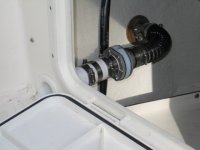Lollygaggin
New member
Another question from a wannabe, or a soon to be; Self bailing cockpit is important to me, do all C-Dories have this feature? Please feel free to talk me out of the need too. We have experienced water coming in over the stern before and the self bailing feature probably saved us. We don't actually seek heavy weather like that but some times stuff happens.
Also, the cored hulls are new to me; I have heard mentions to steer clear of them (as in a local brand), but no concrete evidence to support that advice.
We'll be checking C-Dory out at the Seattle and Vancouver boat shows in the new year and will probably end up looking for a previously loved 25 footer. (the Admiral is still sort of stuck in the "Sea Ray cruiser" mode and it's gonna take sum gentle persuasion and seed planting to make this a unanimous decision ). Any and all help, advice, and criticism is appreciated.
). Any and all help, advice, and criticism is appreciated.
Also, the cored hulls are new to me; I have heard mentions to steer clear of them (as in a local brand), but no concrete evidence to support that advice.
We'll be checking C-Dory out at the Seattle and Vancouver boat shows in the new year and will probably end up looking for a previously loved 25 footer. (the Admiral is still sort of stuck in the "Sea Ray cruiser" mode and it's gonna take sum gentle persuasion and seed planting to make this a unanimous decision

